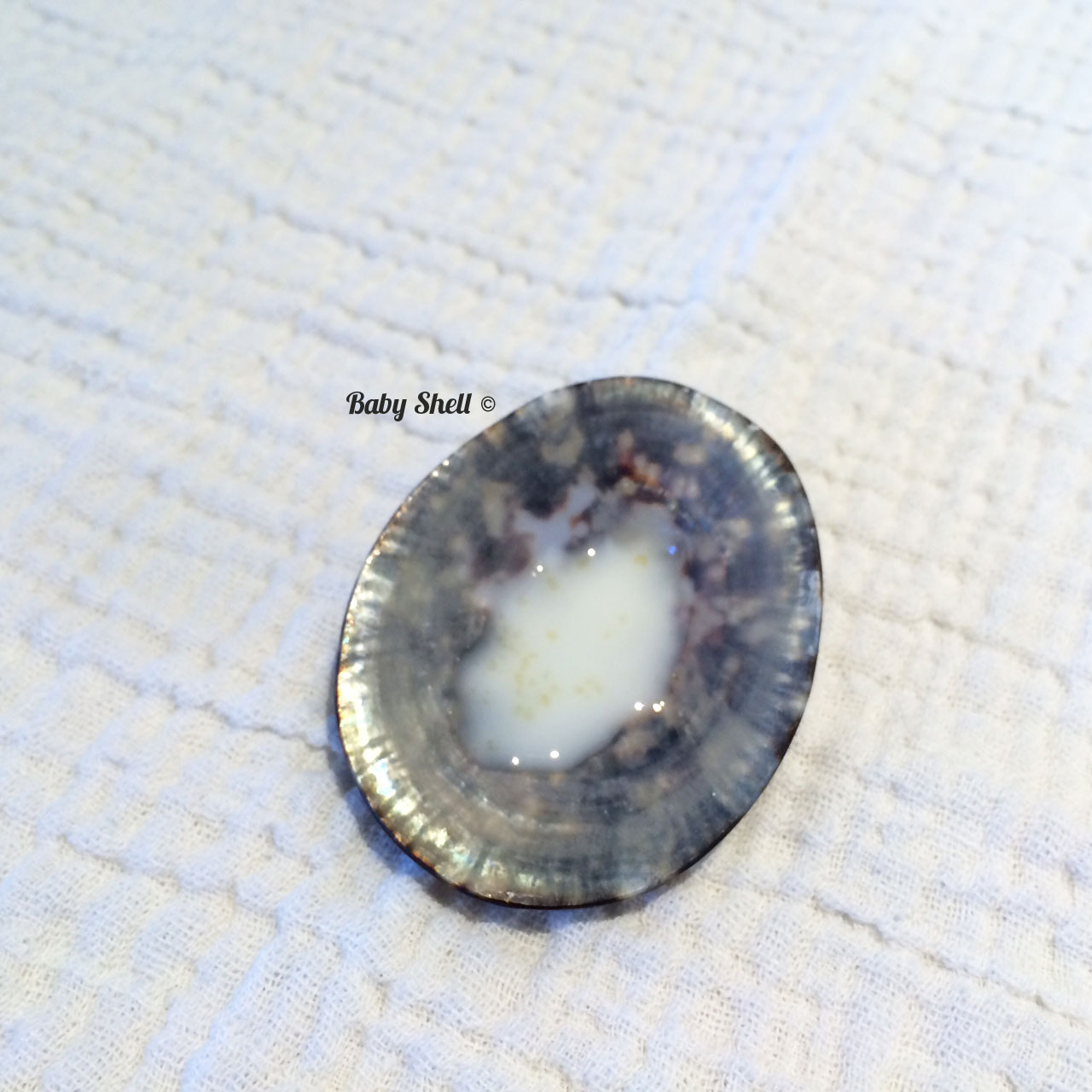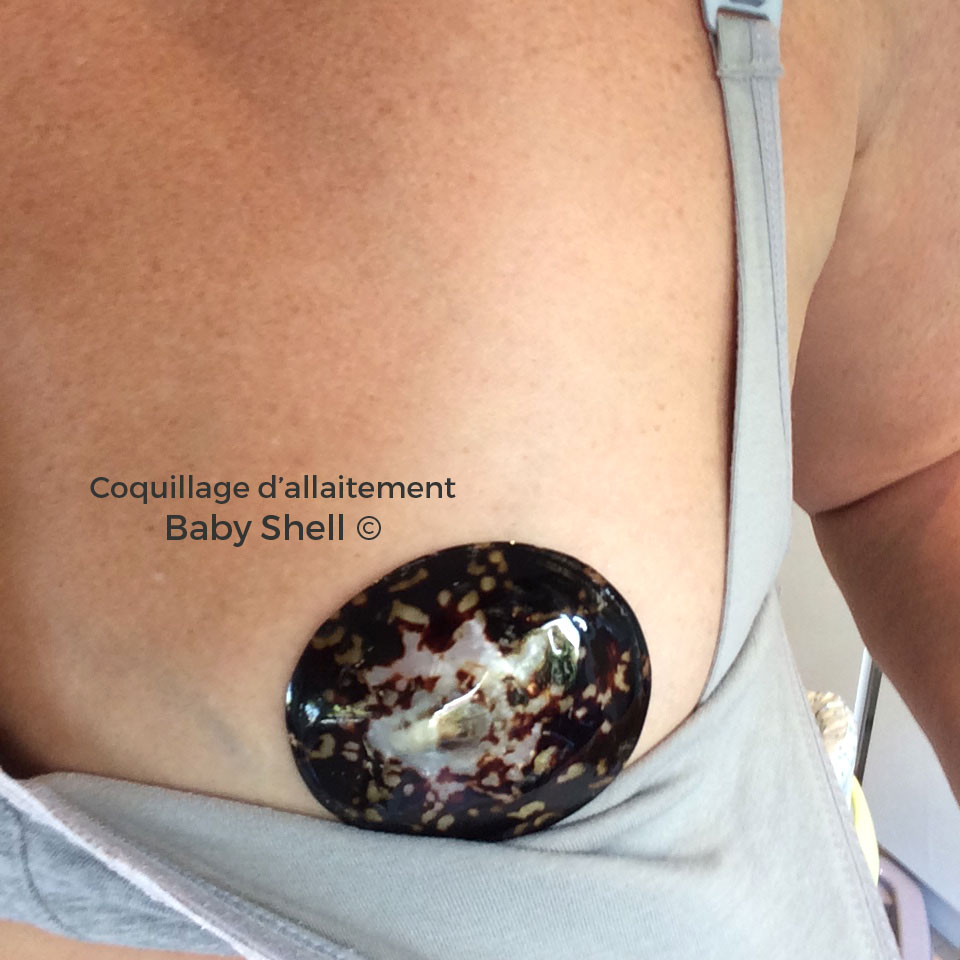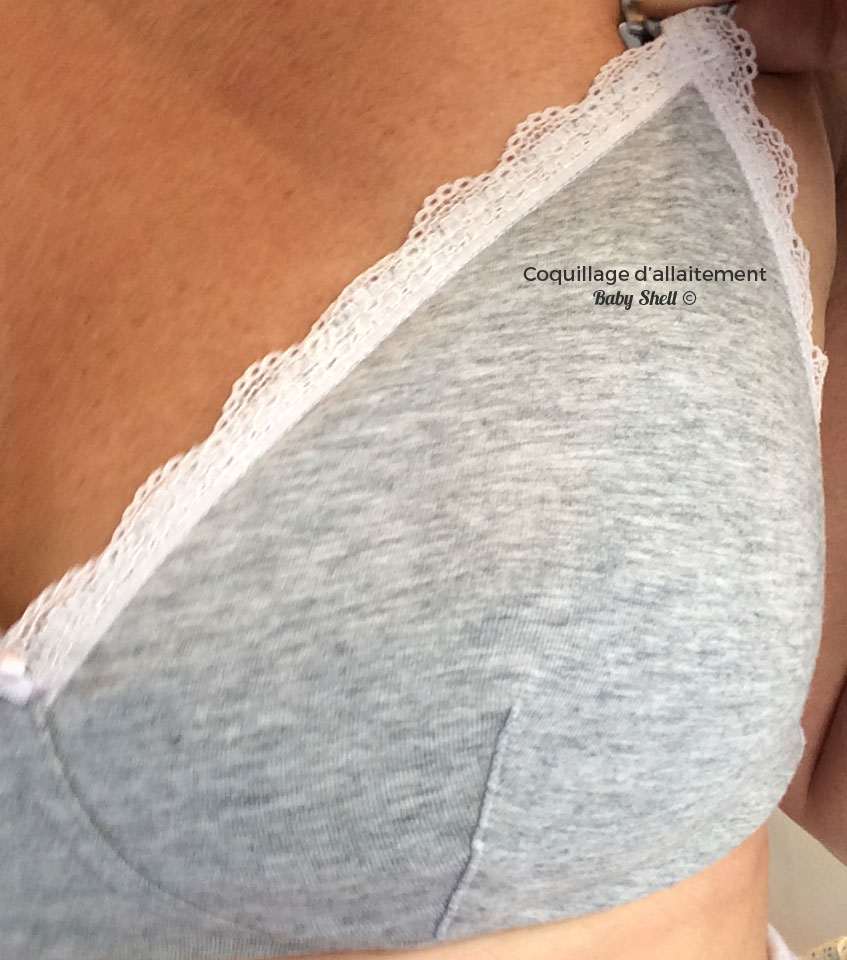Cracks of feeding
How to prevent and treat cracks during breastfeeding?
The breast milk dressing
The dressing by breast milk is one of the techniques recommended by midwives and lactation advisors to prevent and especially to cure cracks during breastfeeding. This technique uses the fabulous virtues and properties of breast milk. The breastfeeding shell, will naturally keep your milk in contact with your nipple and allow it to swim in it.
WOUND HEALING
Information from La Leche League France website: “Healing is a natural and spontaneous process provided that the wound is in a favorable microenvironment.For many years, breastfeeding mothers have been advised to dry the nipple. after breastfeeding, including hair dryers, this advice totally contravened the principles of wet dressing, which has been used for more than 20 years for all skin wounds. “Indeed, wet wound healing prevents formation of scabs that break off at the time of feeding, interrupting the healing process.Two kinds of hydration are involved in this process: internal hydration, and surface wetting.Healing in a moisturizing medium preserves hydration natural tissue of the areola, allows the crevice to fill without crusting, and the skin to regain its normal state The “ideal dressing” would therefore be one that retains adequate hydration of the wound, but would not be toxic to the baby who ingests it, does not irritate the nipple skin, and should not not be removed before breastfeeding. There is an ideal product, accessible and free: the colostrum and the milk that follows it, simply. ”
CHARACTERISTICS OF COLOSTRUM AND MATERNAL MILK
Information from La Leche League France website: “Colostrum is the liquid that precedes milk and its secretion usually begins around the third trimester of pregnancy and continues for seven days after birth. Nutritional characteristics are different from the milk that will follow it, its physical constitution is quite similar.It should also be noted that the end-of-feed milk is richer and denser, more fat.
During the formation of lipid droplets in the cells of the mammary gland, a membrane (derived from the Golgi apparatus) surrounds the future fat globule. This wall consists of glycoproteins, phospholipids, triglycerides, cholesterol and enzymes. It acts as an emulsifier, which explains the adhesiveness of colostrum / breast milk in the final feeding phase, so conducive to the filling of the crevice and its healing.
Human milk still contains epidermal growth factors (EGF), which act on cell multiplication, and anti-infective factors. Oligosaccharides and glycoconjugates are complex carbohydrate molecules that inhibit the attachment of many pathogenic microorganisms. (Milk and dairy products in human nutrition). A dressing consisting of colostrum or milk thus brings many anti-inflammatory and immune factors, as well as white blood cells and epidermal growth factors, all directly operational elements on a possible anti-infective process: it is a real “parachutage »Protection for the wound.
The protection of the crevice is acquired by the spreading of the last drops of the feed, it seems essential to us that the benefit of the process is prolonged by the application of a wet dressing which will preserve the humidity of the environment and avoid the formation of a crust. It is therefore clear that we associate, in the practice that we will describe with examples below, the use of the end-of-feed milk that fills the crevices, and the wet dressing, which optimizes their effectiveness. ”
How to use the breast shell BABY SHELL



Preventing the risk of cracks
At the beginning of breastfeeding, it is the frequency and the duration of the feedings which can malmén the ends of the breast and cause cracks, like a bad position of the baby during the feeding. It is therefore important to seek advice from your midwife or lactation consultant at the first symptoms.
HERE ARE SOME ADVICE TO PREVENT CREVASES.
It is important to put your baby on the alert so that we must avoid waiting until he cries: he is thus calmer and more patient. Tickle baby’s lips with your nipple. He must open his mouth wide and the nipple point to the bottom of his palate. Your baby must be having his belly pressed against you and you must not lean toward him. At first, it takes several tries to coordinate your actions with the baby’s reactions. It’s a common learning. If the baby is frustrated, take a break to calm him down before starting again.
How to know if the feeding is effective? your baby should have a large part of your areola in your mouth, in addition to the nipple. The baby’s lips are soft and rolled out. After a series of rapid sucking, the baby will swallow. You will be able to observe this swallowing by a wider movement under the throat and a characteristic sound. To break the suction, put your finger on the corner of baby’s lips and press your breast or gently pull on the cheek. If you feel pain or a gene, do not let your baby suckle incorrectly. If the pain of the nipple continues, it is necessary to make sure of the good position of the baby, here is a link towards the Leche League on the positioning of the baby: http://www.lllfrance.org/vous-informer/fonds-documentaire/ breastfeed today-hui-extracts / 1140-55-positions-dallaitement
